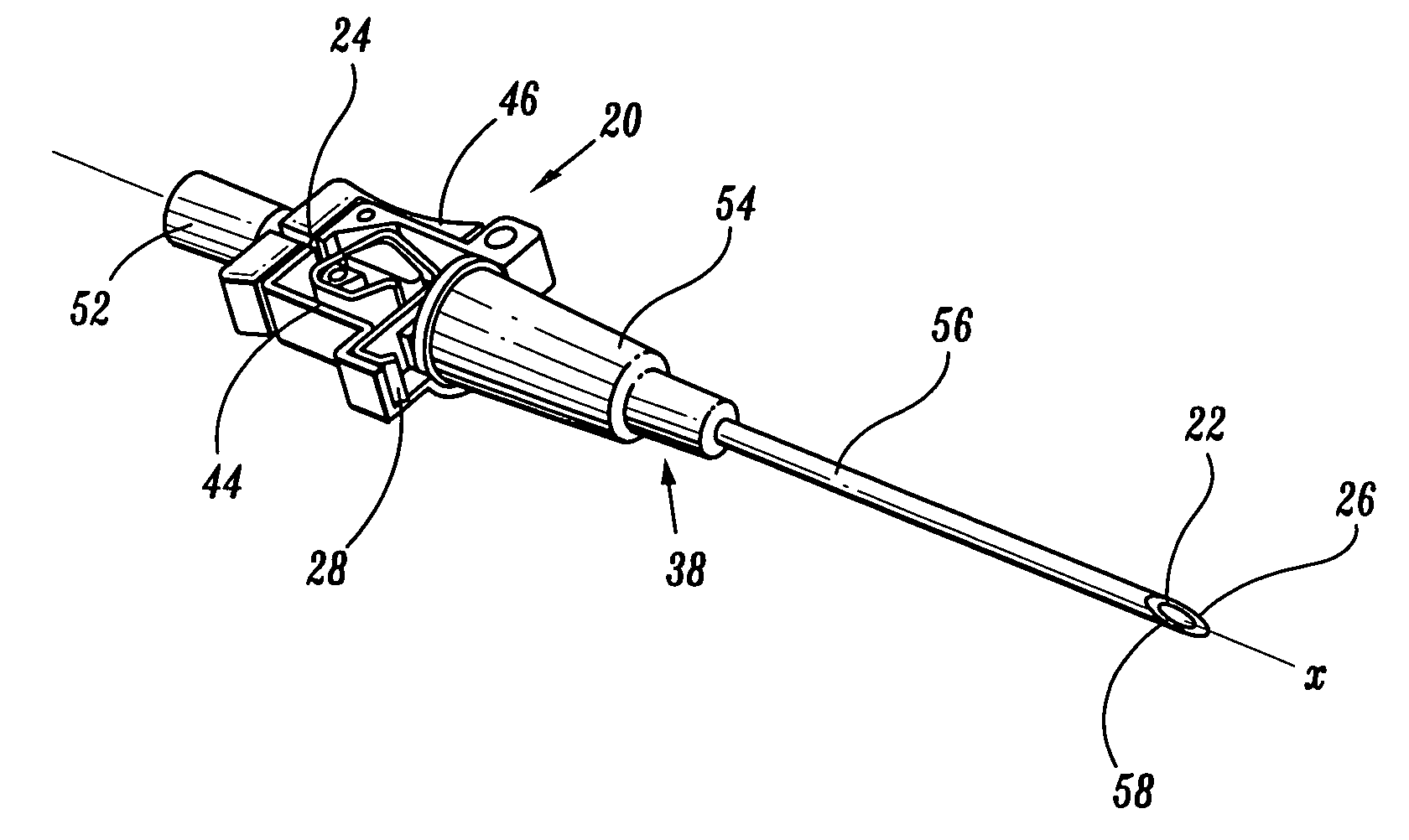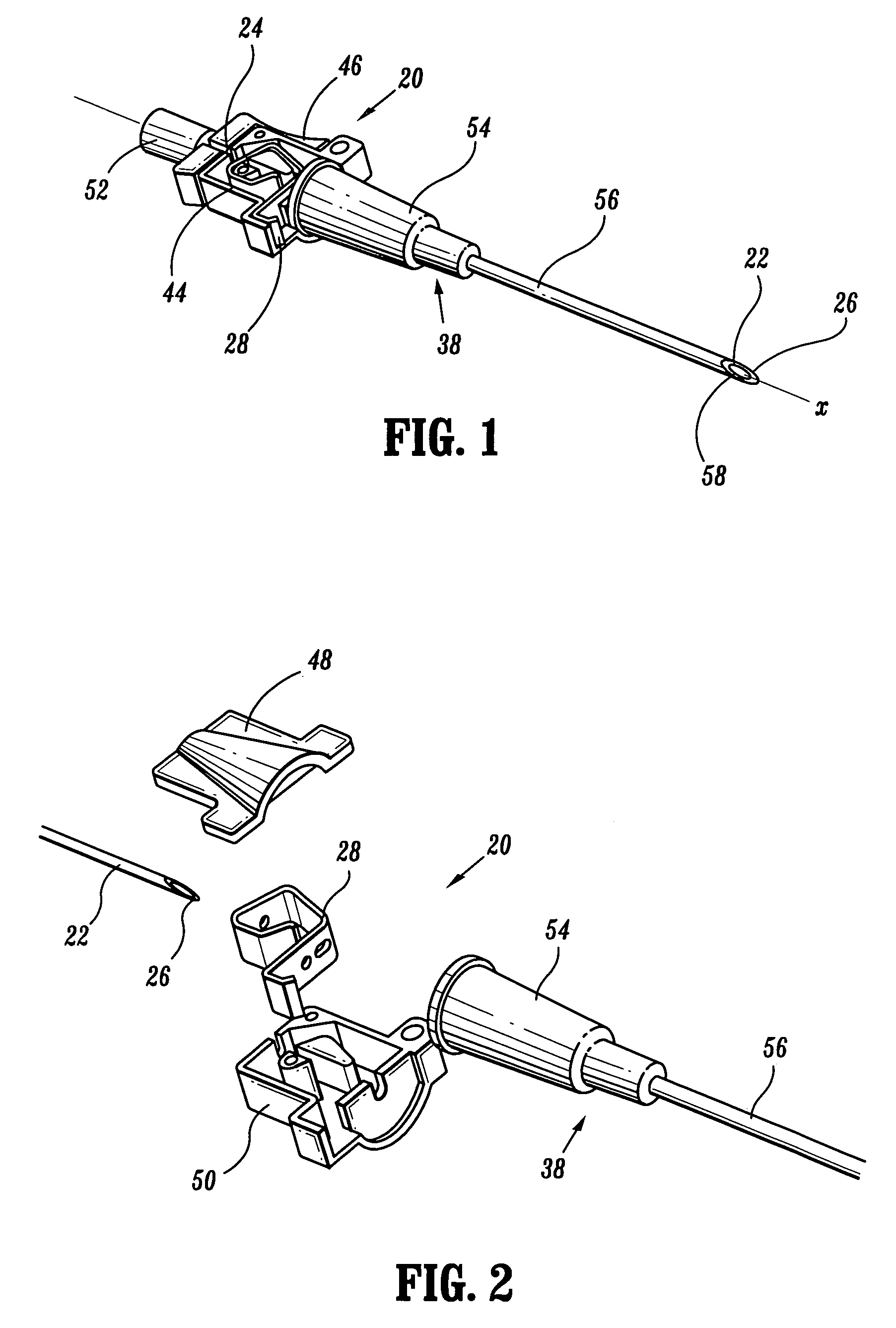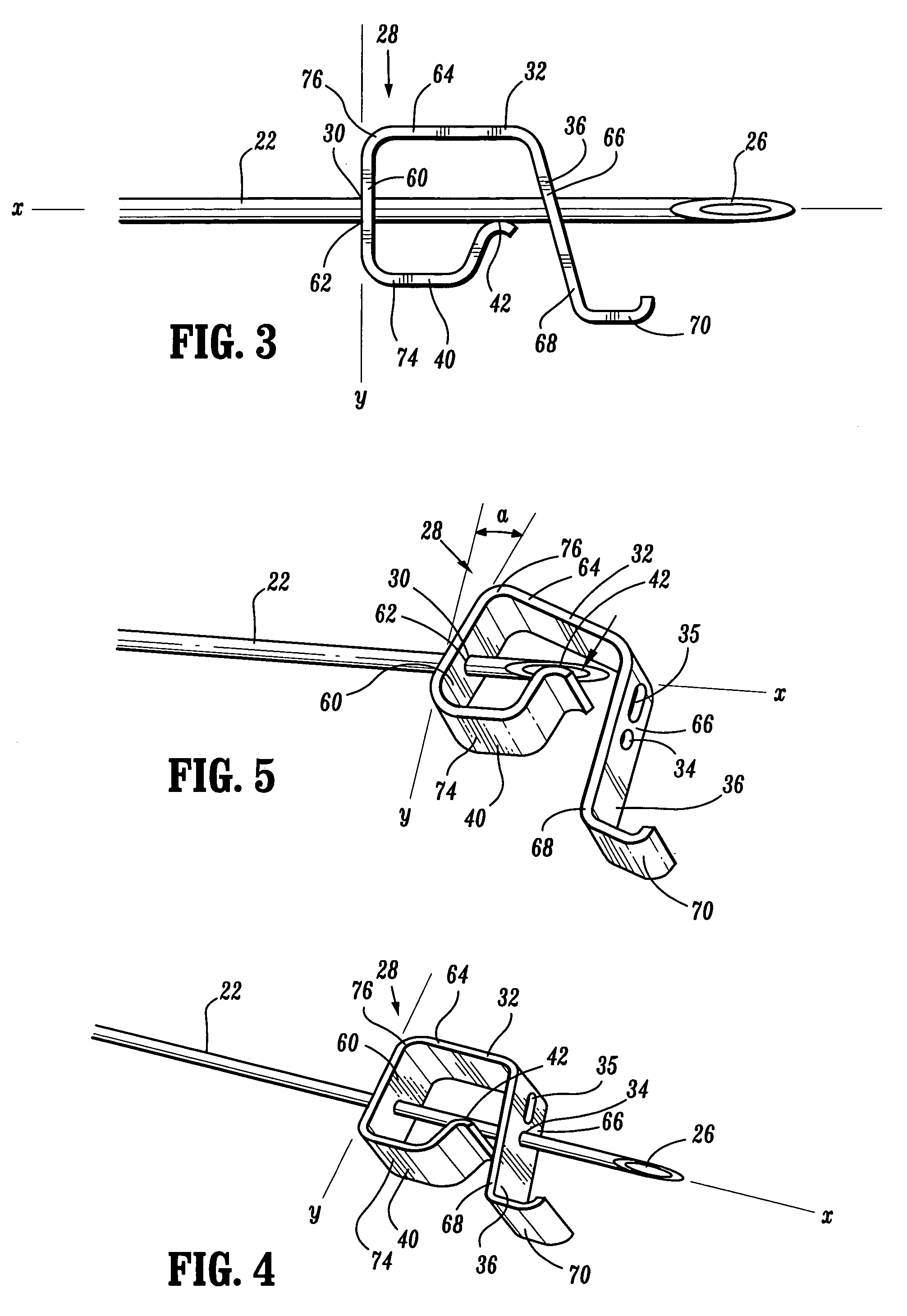Safety shield
a safety shield and shield technology, applied in the field of safety shields, can solve the problems of inconvenient use of hands by practitioners, inability to protect patients from blood-borne pathogens, and the most prevalent occupational health hazards, so as to prevent hazardous exposure, reduce the occurrence, and reduce the exposure to pathogens.
- Summary
- Abstract
- Description
- Claims
- Application Information
AI Technical Summary
Benefits of technology
Problems solved by technology
Method used
Image
Examples
Embodiment Construction
[0038]The exemplary embodiments of the safety shield and methods of operation disclosed are discussed in terms of medical piercing members such as, for example, hypodermic needles, biopsy needles, intravenous (IV) introducers, trocars, guide wires, thoracentesis needles, etc. for infusion of intravenous fluids, medication infusion or fluid sampling, and more particularly, in terms of a safety shield employed with a needle cannula that prevents hazardous exposure to a needle tip, including, for example, inadvertent needle sticks. It is envisioned that the present disclosure, however, finds application to a wide variety of cannula needles and devices for the infusion of preventive medications, medicaments, therapeutics, etc. to a subject. It is also envisioned that the present disclosure may be employed for collection of body fluids including those employed during procedures relating to phlebotomy, digestive, intestinal, urinary, veterinary, etc. It is contemplated that the safety shi...
PUM
 Login to View More
Login to View More Abstract
Description
Claims
Application Information
 Login to View More
Login to View More - R&D
- Intellectual Property
- Life Sciences
- Materials
- Tech Scout
- Unparalleled Data Quality
- Higher Quality Content
- 60% Fewer Hallucinations
Browse by: Latest US Patents, China's latest patents, Technical Efficacy Thesaurus, Application Domain, Technology Topic, Popular Technical Reports.
© 2025 PatSnap. All rights reserved.Legal|Privacy policy|Modern Slavery Act Transparency Statement|Sitemap|About US| Contact US: help@patsnap.com



